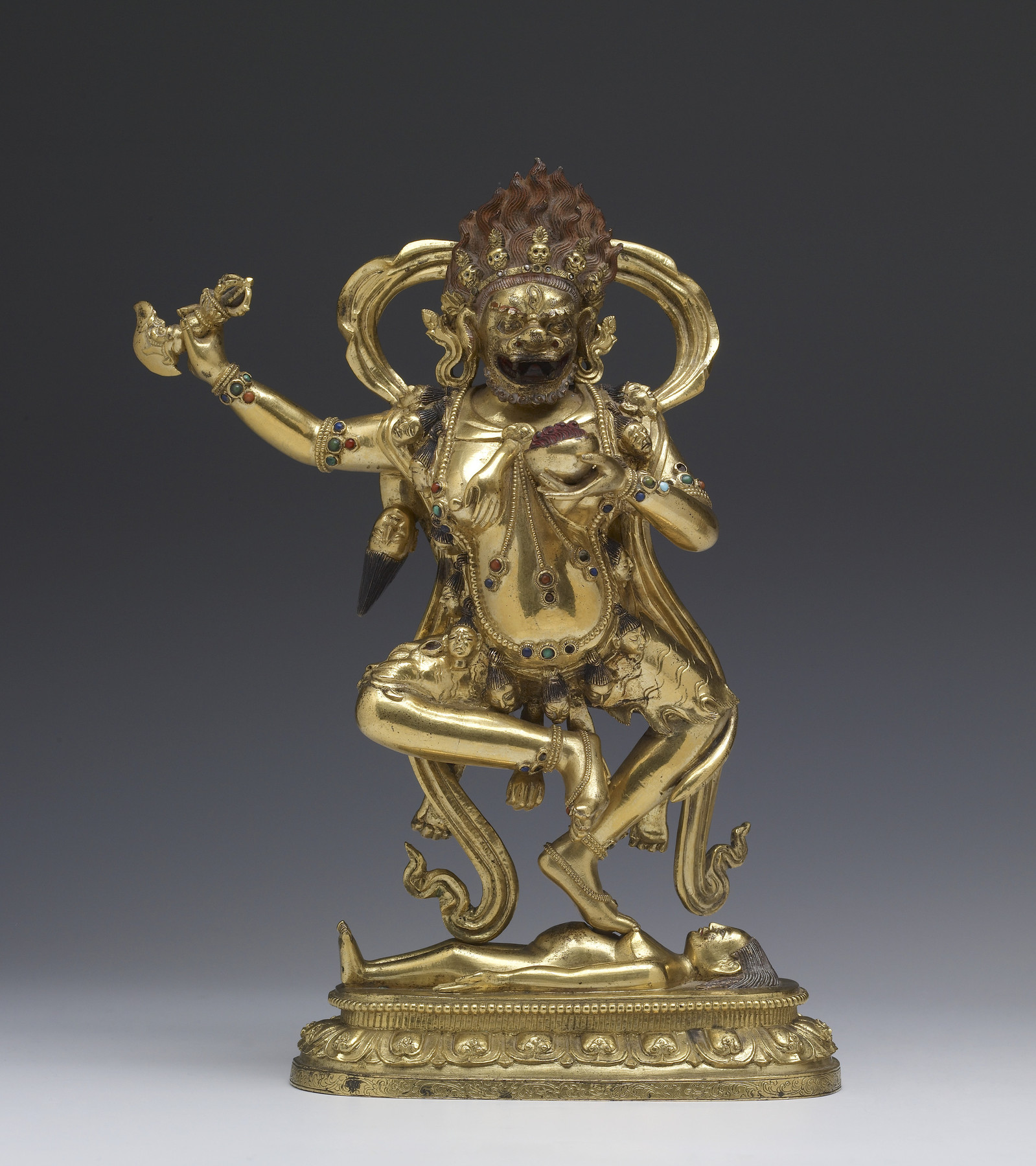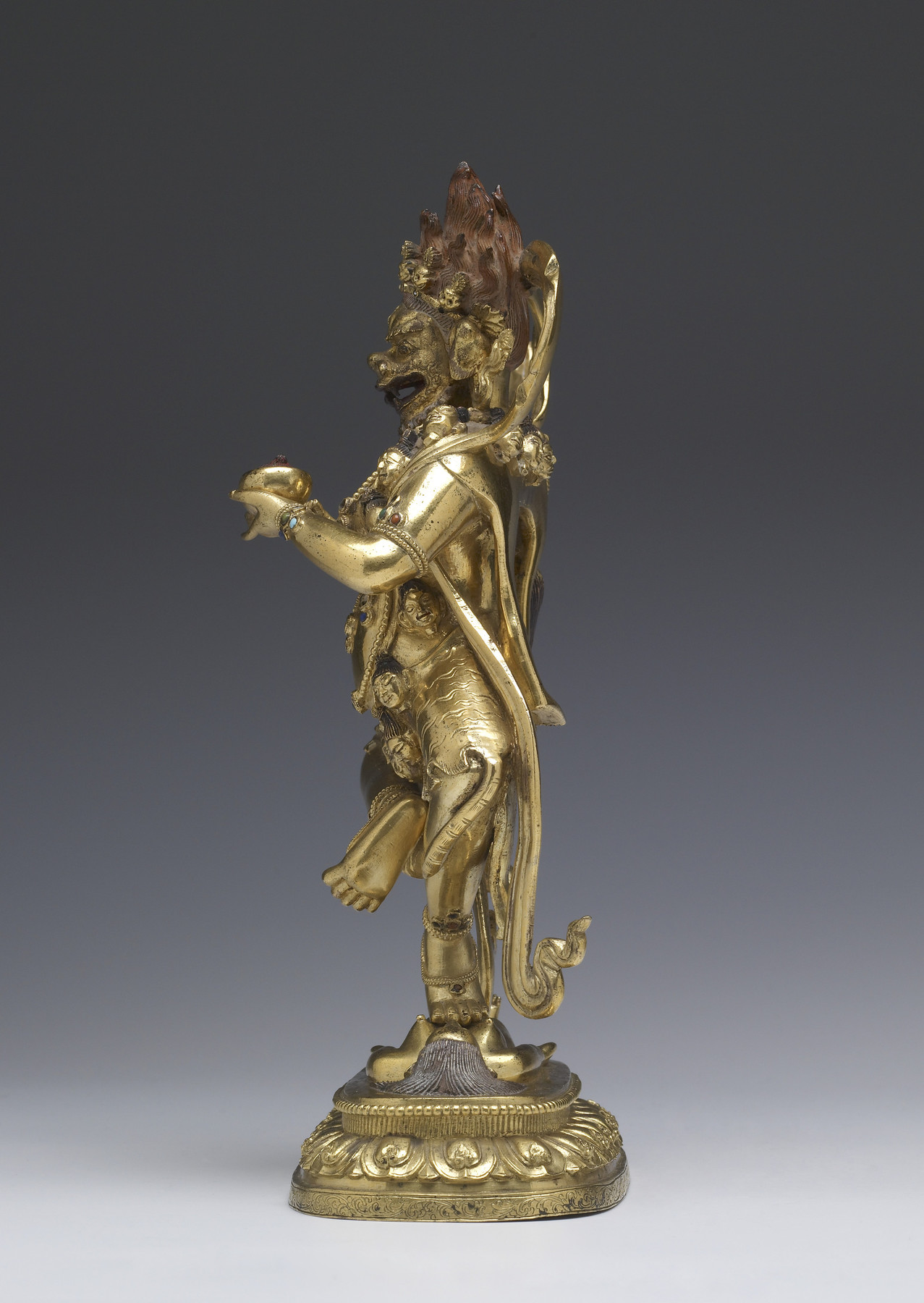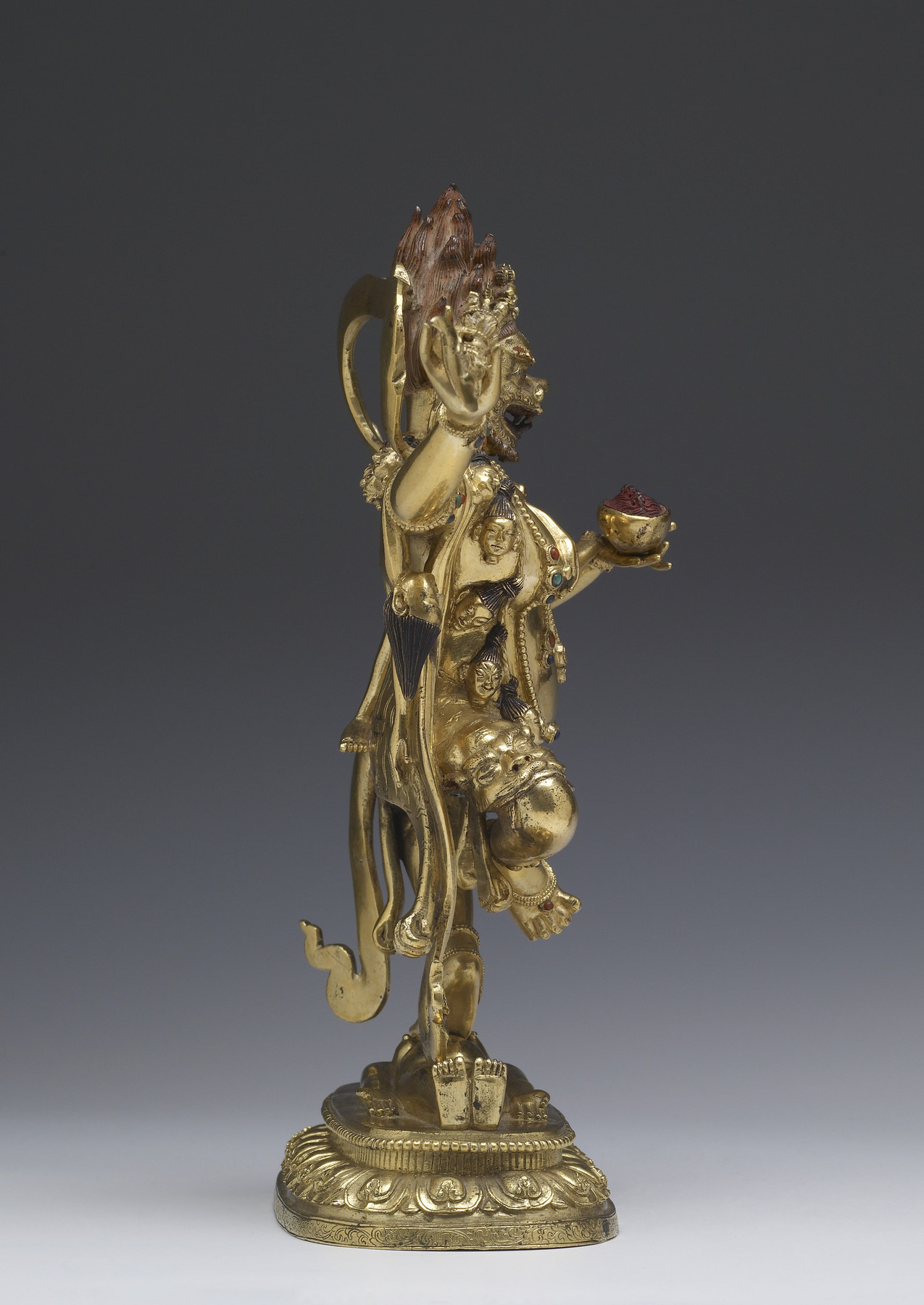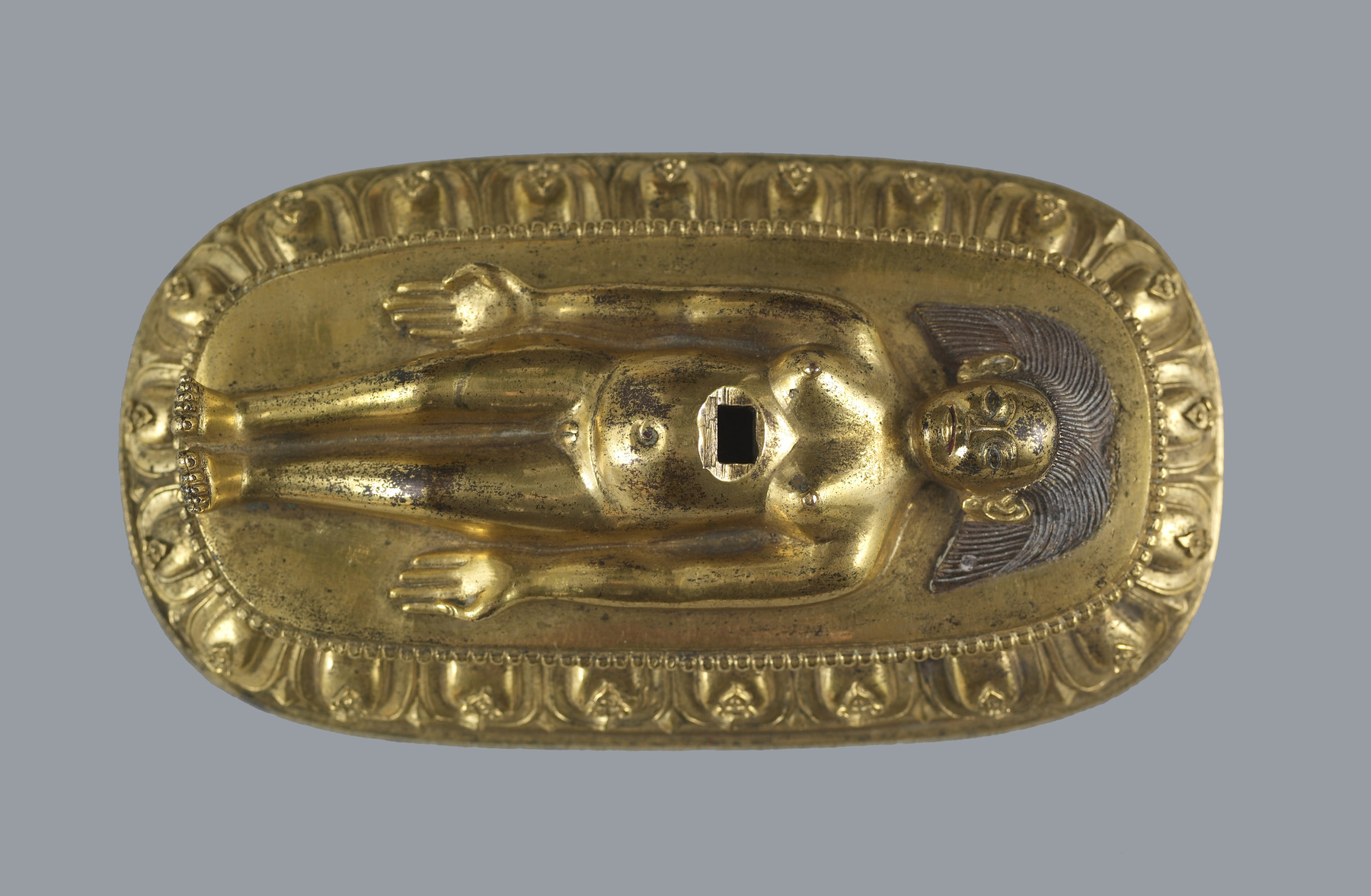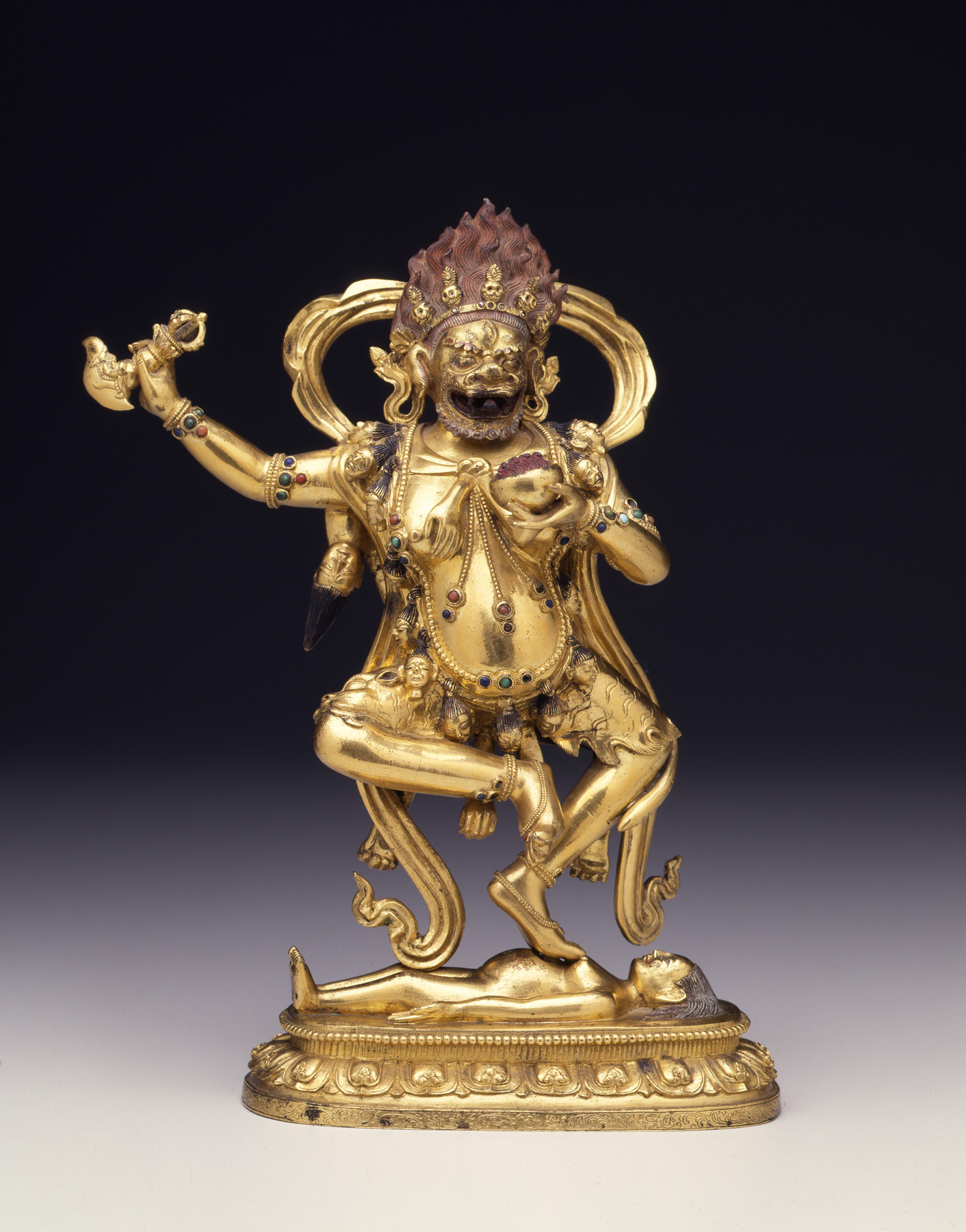Simhavaktra
(China )
Simhavaktra, a Buddhist goddess whose name means “lion-faced,” dramatically embodies the ideal of enlightenment. Every terrifying attribute symbolizes the transformation of negative forces—such as delusion, hatred, and attachment to worldly desires—into the insight that leads to spiritual liberation. Her flame-like hair evokes the fire of wisdom, while the corpse on which she dances symbolizes the impermanence of material existence. She wears the flayed skins of a tiger and a human opponent to Buddhist teachings, which allude to her defeat of anger, delusion, and desire. Her curved knife strips away the ignorance that clouds the unenlightened mind, and the blood that fills her skull cup becomes the nectar of supreme bliss. Richly gilded and inset with semiprecious stones, this sculpture was made in China according to Tibetan artistic conventions.
Provenance
Provenance (from the French provenir, 'to come from/forth') is the chronology of the ownership, custody, or location of a historical object. Learn more about provenance at the Walters.
M. J. Nesco, Philadelphia; purchased by John and Berthe Ford, Baltimore, March 30 1964; given to Walters Art Museum, 2011.
Exhibitions
| 2001-2003 | Desire and Devotion: Art from India, Nepal, and Tibet in the John and Berthe Ford Collection. The Walters Art Museum, Baltimore; Santa Barbara Museum of Art, Santa Barbara; Albuquerque Museum, Albuquerque; Birmingham Museum of Art, Birmingham; Hong Kong Museum of Art, Hong Kong. |
Geographies
China (Place of Origin)
Measurements
H: 8 7/8 x W: 6 1/2 x D: 3 1/2 in. (22.5 x 16.5 x 8.9 cm)
Credit Line
Gift of John and Berthe Ford, 2011
Accession Number
In libraries, galleries, museums, and archives, an accession number is a unique identifier assigned to each object in the collection.
In libraries, galleries, museums, and archives, an accession number is a unique identifier assigned to each object in the collection.
54.3085

